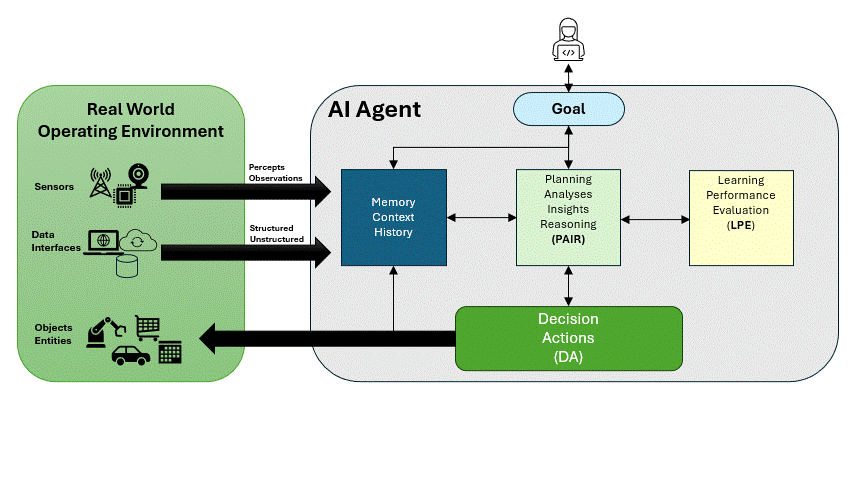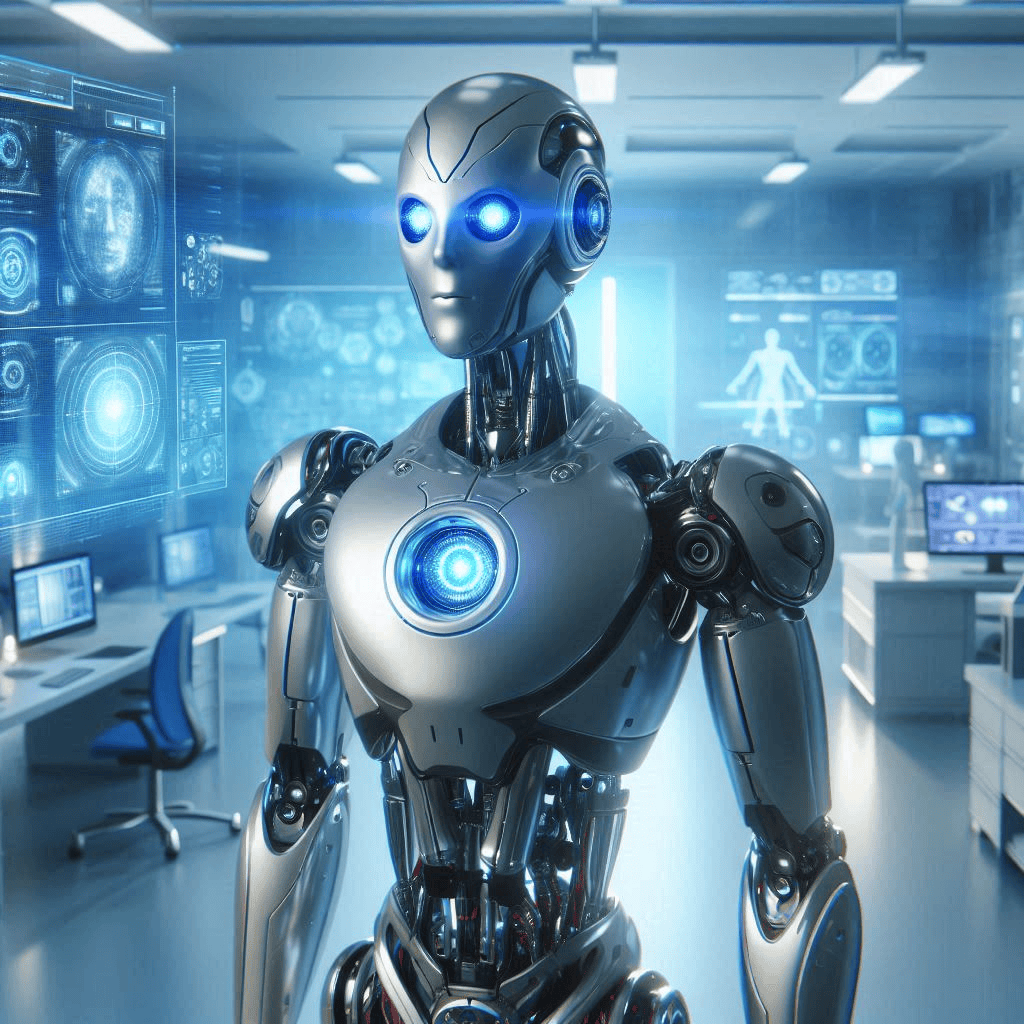What are an AI Agents?
AI agents are self-learning software programs that use AI to perceive their environment, adapt to changes, and act autonomously to achieve goals or complete tasks. Commonly AI agents do things like: (1) complete tasks or goals without direct human intervention, (2) interact and continuously understand their operating environment, (3) constantly learn, reason, and adapt to conditions in their surroundings using AI techniques.
AI Agents vs. Automation vs. LLMs and GenAI
AI agents are different from process automation, large language models (LLMs), and generative AI (GenAI). Process automation, unlike AI agents, does not utilize AI methods and cannot learn or adapt to changes in its environment. It simply automates repetitive, static tasks in a fixed process without contextual awareness of their environment.
LLMs and GenAI employ AI techniques, but they differ in their focus from AI agents. LLMs excel in language processing and generation, while GenAI specializes in creating content such as images, text, videos, and music. Interacting with LLMs and GenAI models are primarily achieved through prompting or text-based instructions.
| Feature | AI Agent | LLM | GenAI |
| Focus | Goal-oriented, interactive, adaptive, autonomous | Text understanding and generation | Content creation (text, images, audio, etc.) |
| Interaction with the world | Active and primarily through sensors - vision, auditory, tactile, and scent | Interacts through natural language text or prompts to answer questions, translate languages, have conversations, write and generate content. | Interacts through natural language text, prompts, and code to generate creative content, answering questions, and assisting with tasks based on user prompts and instructions. |
| Learning | Adaptive, can learn from experience | Primarily trained on static data | Can be trained on diverse data, including text, images, and audio |
| Example Applications | Robots, autonomous vehicles | Copilots, Chatbots | DALL-E 2, Jasper AI, Stable Diffusion |
AI agents can be categorized into six types: reflex, model-based, goal-based, utility-based, learning, and hierarchical. While all are agents, only goal-based, utility-based, and learning agents are considered true AI because they exhibit key AI characteristics like reasoning, planning, and learning. Goal-based agents strive to achieve specific objectives, requiring them to analyze situations, consider options, and plan actions. Utility-based agents maximize a defined value by weighing different factors and making trade-offs, demonstrating sophisticated decision-making. Learning agents are advanced AI, which improves by learning from experience (data and information) and adapting to new situations becoming smarter over time.
AI Agent Design: A Simplified View
An AI agent is like a smart system that can act and learn in the real world. The design below shows a general architecture with an overview of how an agent works:
1. Goals: The agent receives goals from either a human supervisor or, for fully autonomous systems, sets its own goals.
2. Brain: The agent's "brain" is made up of 4 core components:
- Memory: Stores past experiences and current information, like a short-term and long-term memory with context.
- PAIR (Planning, Analyses, Insights, & Reasoning): Uses data analysis and AI techniques (like machine learning, reinforcement learning, AI language models) to analyze information, plan, and make decisions to achieve its goals.
- LPE (Learning, Performance, & Evaluation): Uses data analysis and AI techniques to evaluate the agent's approach and performance based on its goals and past successes as well as benchmarks.
- DA (Decision & Action): Chooses the best tools and actions to take in the real world based on the PAIR's analysis.
3. Real-World Connection: The agent constantly receives information from the real world through sensors (cameras, microphones) and data interfaces (language prompts, APIs). This keeps the agent aware of its surroundings and how its actions impact the world.
Summary
In essence, AI agents continuously learn, plan, drive action, and adapt to changes in the real-world without constant human guidance. This makes them powerful tools, going beyond simple automation and even the capabilities of LLMs and GenAI. From basic chatbots to complex self-driving cars, AI agents are poised to transform how we interact with technology and the world around us.

